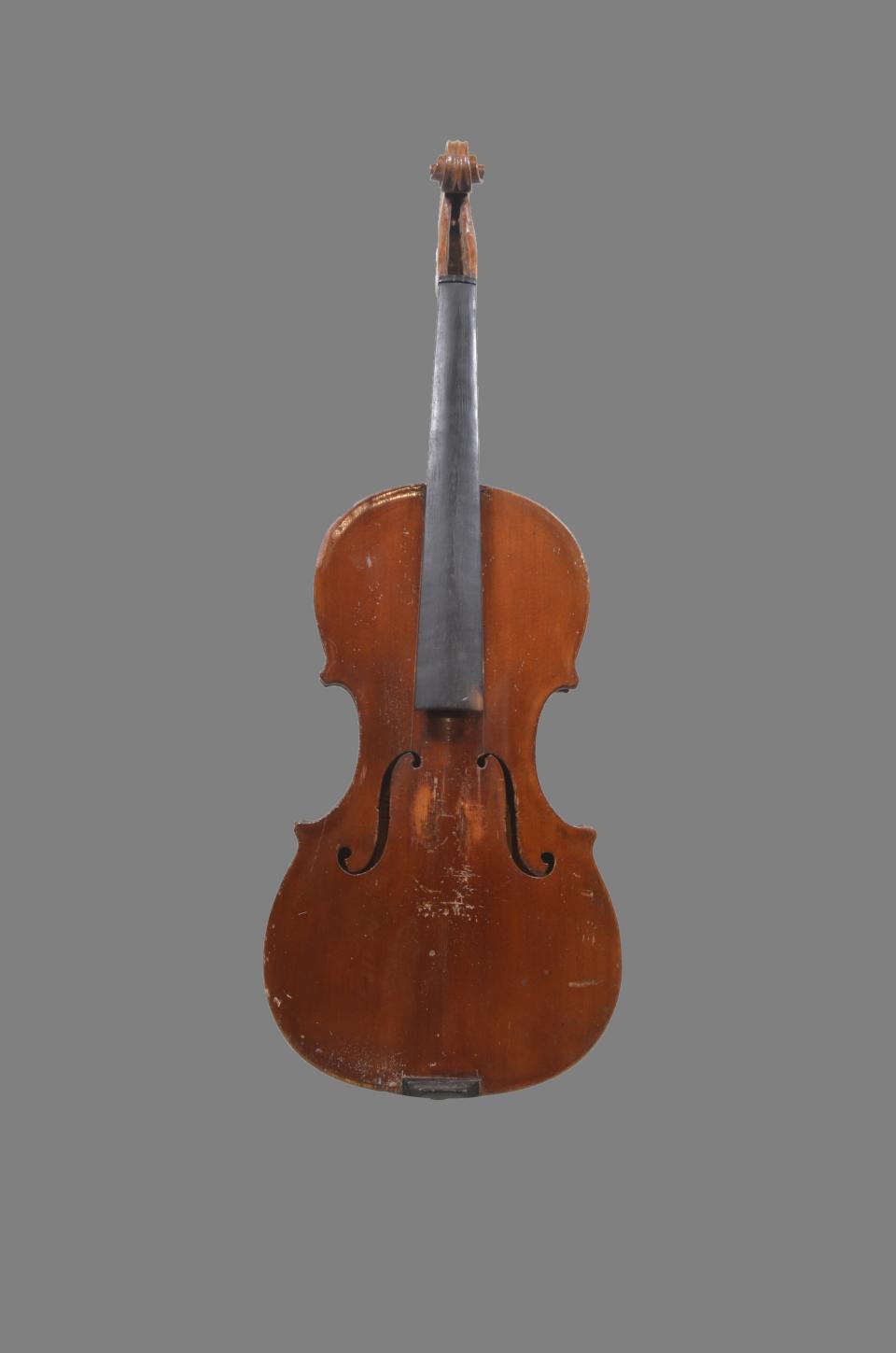
Length 61.3 cm x Width 20.8 cm x Height 8.0 cm
a - L 61.3 cm x W 20.6 cm x H 8.0 cm
b - L 35.5 cm x W 20.8 cm x H 1.4 cm
A wooden violin that consists of two parts: the back of the violin body and neck (a) and a removable front piece (b). At the top of the violin's main body, there is an intricate scroll design carved above a rectangular pegbox. There are four circular holes on either side of the pegbox, where strings could attach. Below the pegbox, the dark wooden neck of the violin gradually widens toward the centre. The body of the violin is oblong in shape, with rounded, concave spaces in the sides. Throughout the interior surface, there are several handwritten notes made in pencil. At the top, there is a paragraph handwritten in what appears to be German. In the middle of the interior, along the edges, are the words "Kingston Sep. 20 // G M Weber // 1890" and " No. 63 // Kingston 1890". Written upsidedown near the bottom is "G M Weber Maker // September 20, 1890 // No. 63". The back of the body is undecorated and slightly convex. At the very bottom of the base, there is a small circular wooden nob. The front surface of the violin is removable and matches the shape of the base. In the centre, there are two F-holes. The wood on the exterior side of the top is stained mahogany, while the underside is unfinished. On the underside there is a rectangular piece of wood attached with the words "G M Weber Kingston // Ont 1890" written in pencil to the left of it.
The inscription on the interior of the violin marks its creation by George M. Weber in Kingston, ON. Weber worked in the piano manufacturing business in the city for around three decades, and operated his company Weber & Co. starting in 1868. Later, Weber began making upright pianos under "G.M. Weber," the company indicated on the violin. When the violin was brought to a luthier by its previous owner, they were told that it looked to be made by a guitar maker. However, there are no known records to suggest that George M. Weber ever made guitars.
